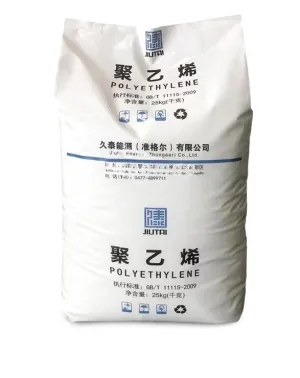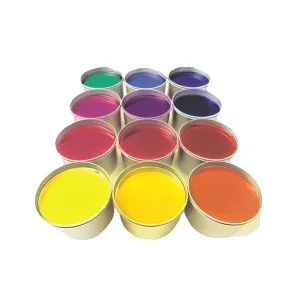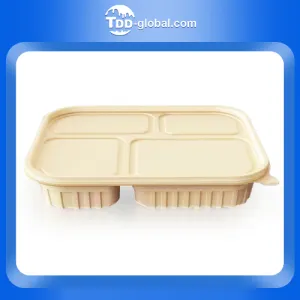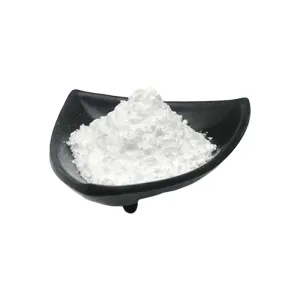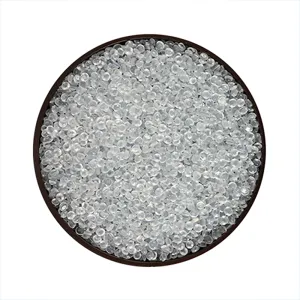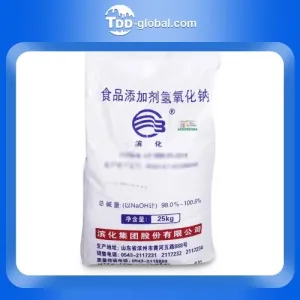Union Budget 2016-17: FICCI’s recommendation for the chemical industry

Industry chamber FICCI has recommended the Government to reduce customs duty on ethyl alcohol and methyl alcohol and increase customs duty rate of ethyl acetate. It has also requested that full exemption from the levy of customs duty may be granted on imports of membrane cell plant /electrolysers, membranes & their parts for manufacturing caustic soda. “Besides simplifying regulatory processes and compliance related issues, the government will have to look at policies specific to the chemical manufacturing sector to generate sizable impact. Industry feels Free Trade Agreements (FTAs) are having a negative impact on business. FTAs create an ‘inverted duty structure’ making it cheaper to import a finished product rather than manufacturing or assembling it in India,” FICCI stated in a pre-budget memorandum to the Government.
Industry scenario and recommendations:
The Indian Chemical Industry is an integral part of Indian economy. The industry has key linkages with several other downstream industries such as agriculture, infrastructure, textiles, food processing etc. Over the last few decades, the chemical industry has seen an increasing shift towards Asia. Indian chemical industry stands out to be the 3rd largest producer in Asia and 12th in the world in terms of volume. The chemical industry in India stands at ~USD 144 Billion* FY14 and is expected to grow at ~9 % p.a. over the next five years. It currently accounts for ~3.4% of the global chemicals industry (~USD 4 Trillion) The industry which includes basic chemicals & its products, petrochemicals, paints and varnishes, gases, soaps, perfumes and toiletries is one of the most diversified of all industrial sectors covering ~80,000 products.
The growth of this sector will be primarily driven by domestic consumption because per capita consumption of most of the chemicals is much lower than global averages. The government has been taking initiatives to address challenges in infrastructure, feedstock availability, complex tax and duty structure and overcome other system intricacies. One of the initiatives is ‘Make in India’ campaign, which aims to facilitate investment, foster innovation, enhance skill development and build best-in-class manufacturing infrastructure. GOI is focusing to raise the share of manufacturing in GDP from 16% in FY14 to 25% by 2022.
To meet this increasing demand either the local production will have to ramp up or the imports will have to go up. As import duties have fallen across South and Southeast Asia, large global manufacturers have set up transnational supply chains in countries with better infrastructure, ports and friendly regulatory regimes. This has led to global players shifting from manufacturing to assembly and, subsequently, to outright imports into India. Our view is that sustained growth is more likely to stem from the rise of domestic manufacturing, rather than relying on international companies.
Besides simplifying regulatory processes and compliance related issues, the government will have to look at policies specific to the chemical manufacturing sector to generate sizable impact. Industry feels Free Trade Agreements (FTAs) are having a negative impact on business. FTAs create an ‘inverted duty structure’ making it cheaper to import a finished product rather than manufacturing or assembling it in India.
Feedstock for Chemical Industry
(a) Reduction of Customs Duty on Feedstock Ethyl Alcohol
Presently, India is net deficit of ethanol with estimated production around 245 crore litres against consumption of total 325 crore litres (in 2014-15). Launch of 5% Ethanol Blending Programme with the requirement of 105 crore litres of ethanol has raised the demand. This has further increased price of ethanol available to chemical industries. Due to the inadequate supplies of ethanol in the domestic market, Indian Chemical industry is forced to import ethanol. The chemical industry would be dependent on ethanol imports for the next few years to meet its requirements.
Products manufactured by Ethanol based chemical industry compete with products made from petroleum route where feedstock is derived from crude oil. Currently import duty on industrial ethanol is 5% whereas it is nil for crude oil and 2.5% for ethylene. Hence, there has to be a level playing field to make this industry competitive. On application side, the downstream applications of ethanol are fuel blending, potable liquor, Pyridine, Mono Ethyl Glycol (MEG- further used for Polyester Fibre and Films, Packaging Films and Pet bottles etc.). Ethyl Alcohol is also used for making Acetic Acid, Ethyl Acetate and Acetic Anhydride. Most of these products (Pyridine, Ethyl Acetate etc.) are exported out of country and are major building blocks for various agro chemicals and pharmaceuticals products. Removal of Duty will further boost the export of such products and will increase the forex revenue for the country.
In view of the above, it is requested that basic customs duty on feedstock ethyl alcohol should be reduced to nil as this will promote growth of downstream chemical industry products. It will align the duty rates with other feedstock to make ethanol based chemical industry compete in global market with the finished products obtained from the petroleum route.
(b) Reduction of Customs Duty on Feedstock Methyl Alcohol
Methanol consumption in the country is estimated at 1.8 – 2.0 million tonnes and is expected to reach 2.5 million tons by the end of the 12th five-year plan. The current production capacity in the country is 0.385 million tonnes/annum thereby creating a significant gap which would primarily be met through imports from Middle East and China.
On application side, the downstream products of methanol are Acetic Acid, Formaldehyde, Di Methyl Ether, Methyl Tertiary Butyl Ether, Gasoline etc. which are major basic building blocks for majority of chemicals in India. The removal of duty on methanol will boost the downstream industry and will reduce outgo of foreign exchange from country also the resultant lower cost of production will increase the profitability of end products exported out of country. There exists strong opportunity in investment in methanol capacity in the country, but these are limited by feedstock (naphtha and natural gas) availability. In such a scenario, the government can incentivize the development downstream industry by removing custom duty on methanol.
It is requested that basic customs duty on feedstock Methyl alcohol should be reduced to nil as this will promote growth of downstream chemical industry products.
(c) Increase of Customs Duty rates of Ethyl Acetate
India is among the top 5 global producers and is a net exporter of ethyl acetate. India is dependent on Singapore for acetic acid imports which are used as input in the manufacture of Ethyl Acetate. In view of the lopsided FTA, the company which supplies the acetic acid as well ethyl acetate has a cost and logistic advantage. India is not able to compete with them.
Under the Singapore FTA, import of Ethyl acetate suffers 0% duty whereas Acetic acid is subject to 5.56% duty. Hence, there is an inverted duty structure which needs rectification. It is suggested that customs duty be imposed on Ethyl acetate at par with acetic acid.
Alkali Industry
The alkali industry in the country produces mainly Caustic Soda, Chlorine and Soda Ash. These products are the basic building blocks and find various applications as given below:-
Caustic Soda is used in the Soaps and Detergent Industry, Pulp and Paper Industry, Textile Processing Industry, Aluminium Smelting, Dyes and Dyestuff Industry, Plastic Polymers, Rayon Grade Pulp, Pharmaceuticals, Electroplating and Adhesives/Additives.
Chlorine, joint-product of Caustic Soda Industry, is very important for manufacturing PVC, one of the five major thermoplastic commodity plastics. Besides this, it is used in disinfection of drinking water, in pharmaceutical industry and various other chemical industries. Because of the strong oxidizing properties of Chlorine, it is effectively used to control growth of bacteria and viruses in drinking water thereby preventing the spread of water-borne diseases such as Cholera. Use of Chlorine is very important for countries like India especially in case of floods. Over 85% of the pharmaceuticals rely on Chlorine chemistry including medicines that treat heart disease, cancer, AIDS and many other life threatening diseases. Chlorine tablets are also used by public health workers in rural areas.
Soda Ash is used in Glass Industry, Soaps & Detergents, Silicates and various other Chemical Industries.
The present global capacity of Caustic Soda is estimated at 94 million MTPA while India’s capacity is only 3.3 million tonnes i.e. a mere 3.5% of the world capacity, while China has a capacity of 44 million tonnes i.e. 47% of the world capacity. Similarly the global Soda Ash capacity is 60 million MTPA. China has the largest capacity at 25 million MTPA or 41.5% of total global capacity, while India’s capacity is only 3.1 million tonnes i.e. 5.2%.
The Indian industry is facing challenges due to high power cost, cheaper imports and impact of cascading duties and taxes. These challenges affect the capacity utilization which is sub-optimal at less than 80%.
Following recommendations are made in this background:-
(a) Membrane Cell Plant / Electrolysers, Membranes & their parts for manufacturing Caustic Soda
None of these items are manufactured in India as manufacturing is cost intensive and the low demand does not justify investments in manufacturing. An exemption to these items from the current rate of 2.5% will improve the cost competitiveness of the industry who have invested nearly Rs.5000 crores in the past ten years to convert to energy efficient and eco-friendly membrane cell technology for caustic soda production
It is requested that full exemption from the levy of Customs duty may be granted on imports of membrane cell plant /electrolysers, membranes & their parts for manufacturing caustic soda. This will have a revenue impact of Rs.1.2 crores per annum for spares and Rs.0.6 crores per annum for membranes The resulting higher production and duties paid thereon will offset this amount substantially.
(b) Caustic Soda and Soda Ash
India is facing challenges due to cheap imports from low power cost countries in South, SE Asia & Middle East. In terms of technology, India is second only to Japan in adoption of latest technology by investing substantially. However, the high cost of power renders Indian manufacturing at a comparative disadvantage.
It is suggested that basic customs duties on imports of caustic soda and soda ash may be increased from 7.5% to 15%
(c) Poly Vinyl Chloride (PVC)
Poly Vinyl Chloride (PVC) is probably the most important plastic. It is a basic product that goes into serving the basic needs of Indian people. Today unfortunately more than 1.4 million tons of PVC, representing more than 50% of the local demand, is imported into the country due to lack of local investment. The lack of incentive for creating local capacity in India has meant that, while PVC demand in India is growing at a rapid rate, unfortunately it is being serviced by imports – by companies who are serving the Indian market from their overseas locations, rather than by setting up capacities in India. The demand for PVC in India is growing at over 10% every year, and domestic manufacture is disadvantaged due to non-availability of ethylene and the high cost of power. This is resulting in very poor margins for domestic manufacturers, leading to a complete disinterest in capacity additions.
To redress this situation, it is recommended that duty on PVC be raised to 10% from the present level of 7.5%. This move will result in a positive revenue impact of around Rs. 190 crores. Increasing the duty will give an impetus to the domestic PVC industry and provide the incentive for further expansions and investment within India.
(d) Ethylene di-Chloride (EDC) and Vinyl Chloride Monomer (VCM)
EDC and VCM are key inputs in the manufacture of PVC. There is no local manufacture of these products for merchant sale in the Indian market; hence no Indian manufacturer will be affected by bringing down customs duty to nil. Facilities to manufacture these intermediates are usually set up only for captive use. This proposal will therefore not impact setting up of such facilities. In countries with developed petrochemical infrastructure, these are sourced off pipeline; in India, VCM is shipped under highly specialized conditions involving huge logistics cost, making domestic manufacturers uncompetitive compared to their international counterparts.
It is recommended that import duty on these, which is currently at 2.5%, be brought down to 0%. The revenue impact is reasonably small at around Rs. 90 crores, which is more than made up by the increased revenue that can accrue from an increase in Basic Customs Duty (BCD) on PVC resin.
Agrochemicals
Agrochemicals / Pesticides are an important ingredient for the agriculture sector along with good seeds and fertilizers. They need similar treatment for the purposes of levy of excise duty, as the fertilizer sector. Excise duty on pesticides (heading 3808 50 00 and 3808 91 11 to 3808 99 90) needs to be brought on par with the duty on fertilizers. Excise duty on technical grade pesticide and formulations is 12.50%. If this duty is reduced to 8% it will bring down the cost of pesticides to farmers and encourage country wide production leading to lower logistics costs.
Oleo Chemicals
The imports from ASEAN under ASEAN-India FTA incur a preferential tariff which has a slight negative impact on the domestic business. Under ASEAN FTA, in general import duty on most Oleo chemicals has been reduced, whereas the reduction in duty on input raw materials is much less thus rendering domestic chemical manufacturing industry uncompetitive. Following suggestions may be considered to revive the industry:
(a) Since ASEAN FTA is under review, duty structure hurting Oleo chemicals, Surfactants, Home and Personal Care Products needs to be reviewed by imposing reasonable import duties to protect domestic manufacturing industry. This is important as even after having very low or zero import duty on their finished products as per FTA, Indonesia / Malaysia continue to give economic advantage to their domestic manufacturers by imposing Export Duty on the raw materials like Palm Oil, Palm Kernel Oil and its fractions.
(b) Chapter 3401 and 3402 which cover all the surfactant, Soap Noodle, Personal and Home Care Products that use raw materials imported from Indonesia / Malaysia should be removed from ASEAN FTA and should be listed under normal track and an import duty of 15%, both under FTA and under General Tariff area (as it was applicable prior to its inclusion in ASEAN FTA) should be imposed immediately to save extinction of this industry segment.
(c) Fatty Alcohols covered under Chapter 382370 and Chapter 290517, which also depends on the raw materials from Malaysia / Indonesia, should also be removed from the ASEAN FTA and be listed under normal track and an import duty of 15%, both from FTA and from General Tariff area, be imposed on its import in to India. This will save the domestic industry from closure as it already has surplus manufacturing.
(d) Crude Glycerine is one of the key by-products of Oleo chemicals Industry and its pricing very much affects the economics of the main products manufactured from the oils. Currently there is an inverted duty structure for Crude and Refined Glycerine. Since India has sufficient glycerine refining capacity, it is recommended that import duty (both FTA and General Tariff) on Crude Glycerine (HS Code 15200000) should be reduced to zero and import duty (Both FTA and General Tariff) on refined Glycerine which is covered under HS Code 29054500 be increased to 15%.
(e) South East Asian manufacturers use Natural quality raw materials like Crude Palm Oil (HS Code 1511), Palm Kernel Oil (HS code 1513) for manufacturing high quality finished products. Indian manufacturers should also be allowed to import similar quality raw materials without a condition of minimum 20% FFA content at NIL rate of duty only for the manufacture of Soaps and Oleo chemicals on actual user conditions. For this purpose recent Notification No. 12/2014-Cus dated 11-07-2014 should be suitably amended.
Chemical Clusters
The Chemical Industry has special requirement of dealing with effluent discharge. This sector is important and there is a huge unrealised potential of growth as indicated by the present very low per capita consumption levels in the country as also for export. Most of Indian Chemical industry is in small and medium sector and same restricts the capability of investment of entrepreneurs for adoption of newer technologies. The provision of common facilities in the form of good quality power/water supply, effluent treatment/incineration, testing and other logistic facilities such as chemical storage tanks, telecom/firefighting and rail/road connectivity can facilitate the sector. Further if related industries are
set up in close proximity in an industrial estate, they could be vertically integrated resulting in a saving on the transfer cost of feedstock and finished goods. This, coupled with lower investment on infrastructure as a result of sharing, would tremendously improve their cost competitiveness. This will also help in containing the environmental load linked to the chemical industry. Existing hubs (brown field) will need slightly different approach. About 3-4 such chemical clusters based on the best models, could be set up in different regions of the country and these could become the role model for replication. Department of Chemicals and Petrochemicals is already facilitating cluster approach in plastics sector.
Technology Up-gradation Fund for Chemicals Industry
To remain globally competitive and comply with requirements of international conventions, Indian chemical industry needs to upgrade its technology to meet world standards and show improved performance in global trade. A number of chemical plants are of smaller capacities and operating at uneconomic scales of production with obsolete technologies.
The industry, especially the micro, small and medium enterprise sector, does not have access to capital to upgrade technology on its own. Also, non-availability of technology leads to imports in some technology-intensive sub-segments. To address these issues, the government may establish a “Technology Up-gradation & Innovation Fund” (TUIF) that can address specific technology issues, faced by the industry. The fund should also support setting up of common chemicals infrastructure (e.g. effluent treatment plants, chemical waste disposal plants, etc.), which would benefit industries and the environment. From this fund support may be extended to the chemical industry for technology up-gradation at lower rate of interest. This will help industry in improving quality of output and become more competitive.
Register Now to Attend NextGen Chemicals & Petrochemicals Summit 2024, 11-12 July 2024, Mumbai
Recommended Suppliers
 September 23, 2024
September 23, 2024  June 3, 2024
June 3, 2024  June 3, 2024
June 3, 2024  June 17, 2024
June 17, 2024  June 18, 2024
June 18, 2024 
